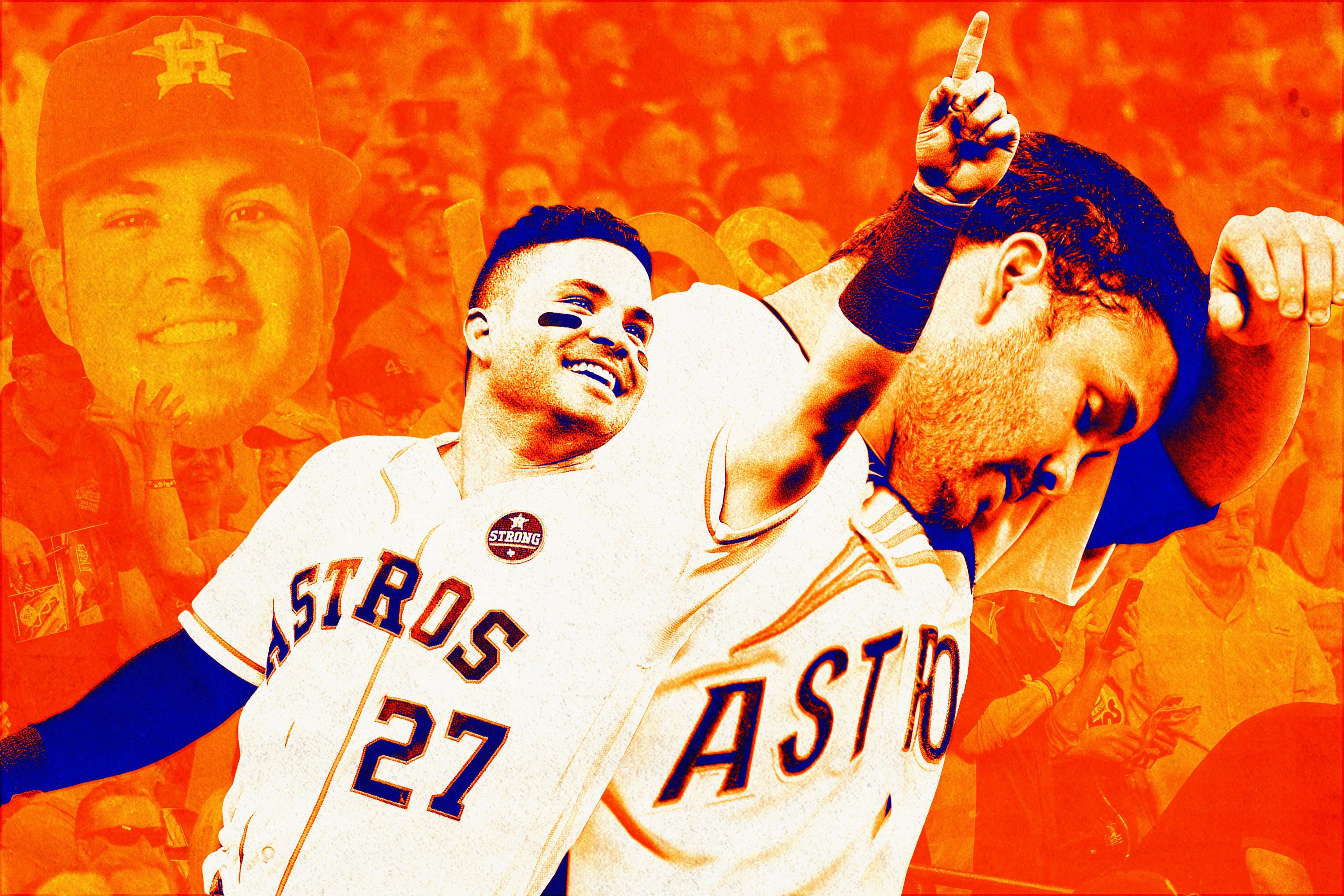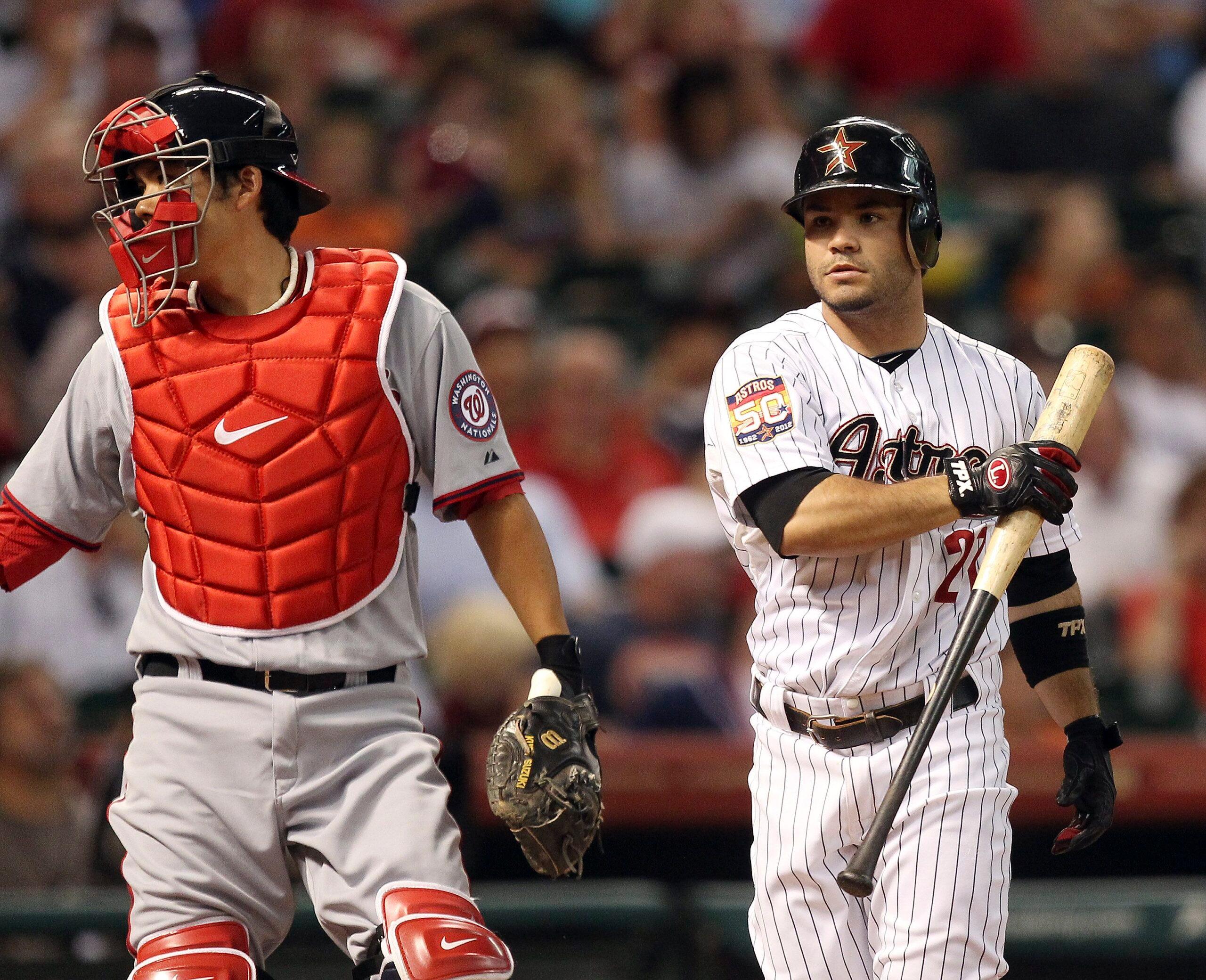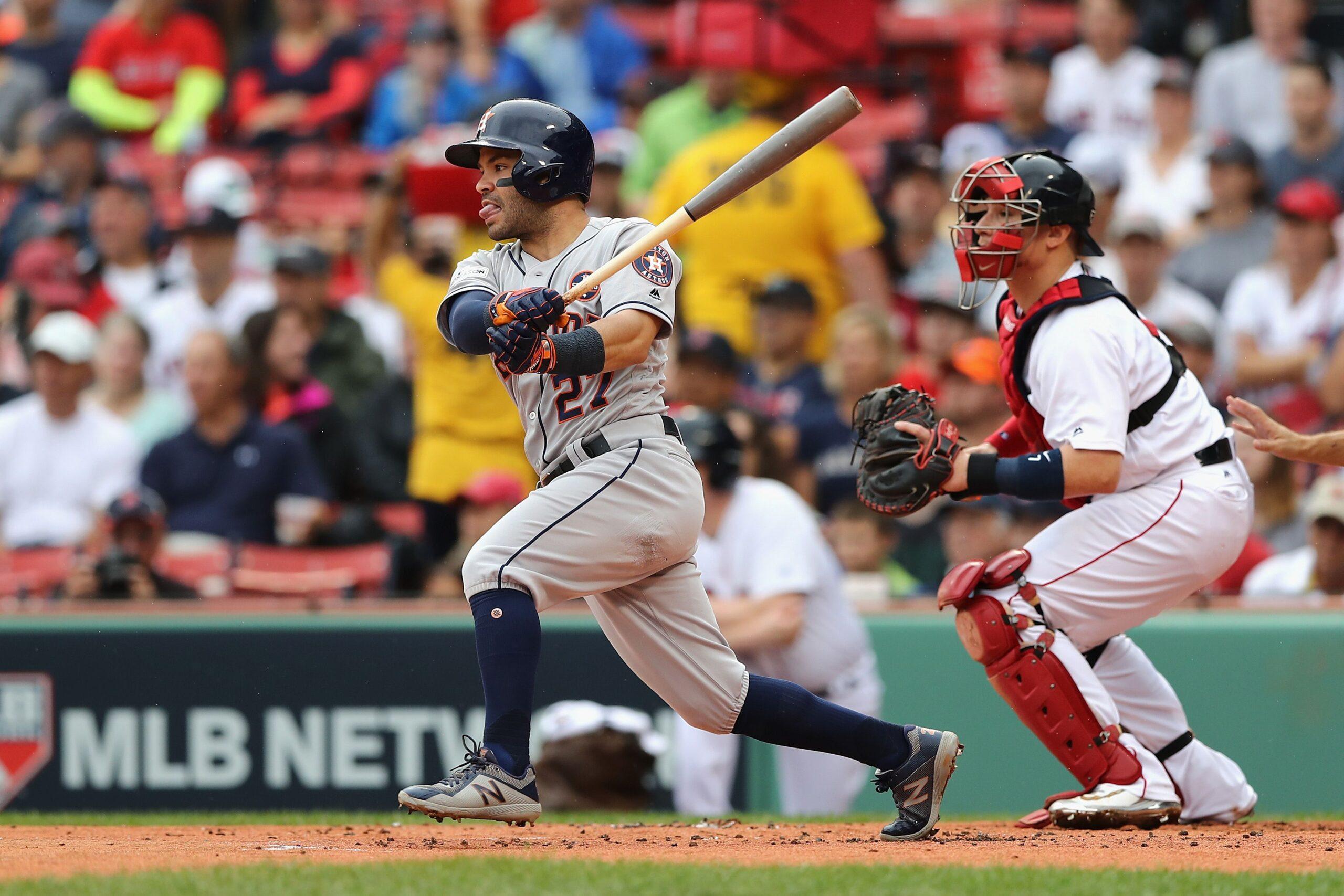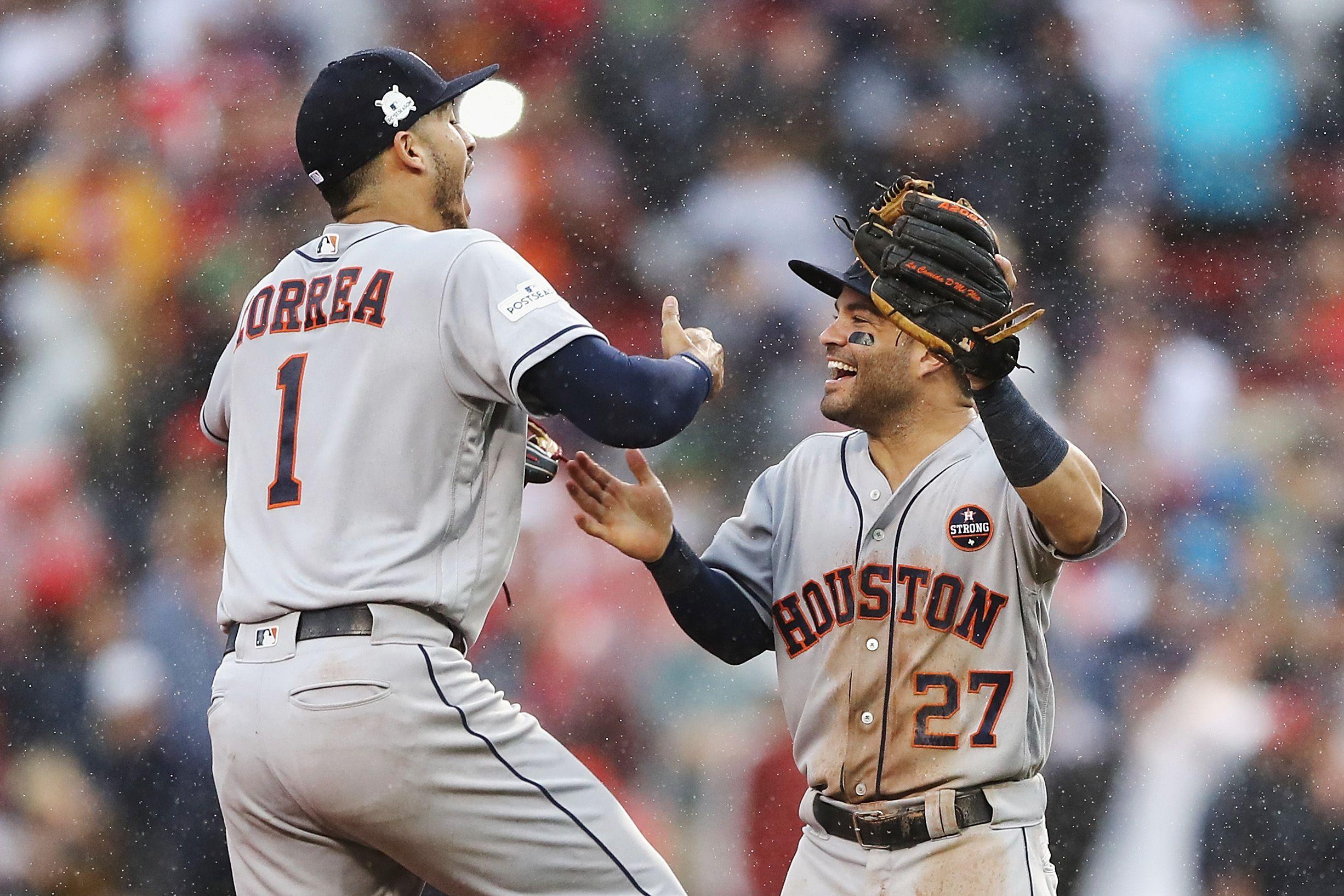
It’s been 12 years since the last time the Astros got to the league championship series. It’s been so long that they were in the National League Championship Series back then. Roger Clemens, Andy Pettitte, Jeff Bagwell, and Craig Biggio were on that team, as well as a few younger guys, like Morgan Ensberg and Chris Burke. Ensberg is managing in Houston’s minor league system now, and Burke is a college baseball analyst for ESPN. Neither has appeared in an MLB game since 2009.

It took a decade for the Bagwell-Biggio-Berkman-Clemens-Lidge Astros to turn into the Correa-Springer-Keuchel-Altuve Astros who returned to the postseason in 2015 and stand eight wins from a title today. In that intermittent decade, the Astros were most famous for off-the-field stuff like switching leagues, trading their good players to the Phillies every summer, and the hardest tank in baseball history.
In 2011, new owner Jim Crane hired former Cardinals vice president of scouting and player development Jeff Luhnow to run his team. Luhnow came to baseball late after spending his 20s and 30s in the business world, and upon taking charge of the Astros, he sold the team’s assets for scrap.
Those were dark days. The Astros lost at least 106 games three years in a row from 2011 to 2013. In 2013, they spent just $0.3 million more on their entire 40-man roster than the Yankees did on Alex Rodriguez by himself. Television ratings of 0.0 became common, and the Astros, while playing in a relatively new downtown ballpark in the fourth-most-populous city in the country, finished in the bottom five in attendance three years running from 2012 to 2014.
On August 6, 2012, in a game against the Washington Nationals, the Astros provided their greatest on-field highlight of the purgatory between Biggio and Carlos Correa. In the 11th inning of a 4-4 game, with Washington’s Roger Bernadina on first, Kurt Suzuki popped up a bunt. Astros pitcher Wilton López ran into first baseman Steve Pearce, who eventually picked up the ball, but bumped into third baseman Matt Downs while he was throwing. The ball caromed off somewhere into right field, as Bernadina just kept haulin’ ass around the bases until someone told him to stop. He’d have been safe at home because right fielder Brian Bogusevic, who spent four seasons as a pitcher in the minor leagues, heaved the ball to the backstop.
Two errors and a game lost doesn’t do that play justice. It’s the ugliest, clumsiest, most slapstick thing MLB’s seen in the past decade.
The most interesting part of the video, though, is the man covering first base.

Most of the players on that team were filler, irrelevant then and irrelevant now. Revisiting this clip, I thought Matt Downs was Scott Downs at first, and that the former Angel and Blue Jay had been on the mound, not López. You might not recognize the man covering first in those hideous black-and-brick red pinstripes, certainly not from that angle and that far away.
Here’s a photo of him from earlier in that game.

The guy Pearce overthrew might be this year’s AL MVP. In the ALDS, he single-handedly dismantled the Boston Red Sox and nobody seemed surprised.
“He hit .500 for a whole month,” Astros catcher Brian McCann said. “I’ve seen this before.”
José Altuve isn’t the only current Astro who lived through the 100-loss years—Dallas Keuchel and Marwin González both played in that fateful game against the Nationals as well—but he is the team’s longest-tenured player. The second baseman signed with the Astros out of Puerto Cabello, Venezuela, on March 6, 2007, and even after four years in the minors, he still made it to the big leagues five months before Crane hired Luhnow.
When a team executes the hard tank, it’s mostly about getting high draft picks and clearing salary—better to be cheap and pick near the top of the first round than expensive and pick in the middle. But the Astros’ proto-Process wasn’t just about gobbling up the draft picks that brought shortstop Carlos Correa, third baseman Alex Bregman, and center fielder George Springer into the fold.
Completely punting on a three-year stretch has obvious drawbacks, but it also allows the team to play like it has nothing to lose and to give an extended run out to players who might develop into something special.

When Altuve came up in 2011, he was a novelty act, a short guy who could run and eat up some innings up the middle for a team that only showed up out of obligation. He hit .276/.297/.357 and walked just five times in 234 plate appearances as a rookie, but he was fast and cheap, so the Astros stuck with him as he matured into a decent but limited hitter in his age-22 and -23 seasons.
Altuve was durable, hard to strike out, and good for 30 stolen bases a year, but he had no power—one home run every 100 at-bats in 2012 and 2013—and, since he thought he could hit any ball within 18 inches of the plate to Mars, and pitchers knew he couldn’t, he never walked.
Still, he was a success, a reliable homegrown everyday player for a team that hadn’t produced many of those in the 2000s. And Altuve didn’t need to be much more than that—Houston had given him just $15,000 when he first signed. In July 2013, the Astros had seen enough to buy out his arbitration years with a four-year, $12.5 million contract with two team options.
Then in 2014, Altuve cut his strikeout rate by 40 percent. His batting average went up by almost 60 points to .341. Two years later, he just up and decided to start walking and hitting for power, and now he’s one of the best hitters in baseball.
MLB is increasingly a three-true-outcome league, exemplified by Yankees outfielder Aaron Judge, a gigantic man who hits the ball so hard you can hear it, and who—by strikeout, walk, home run, or hit-by-pitch—rendered fielders irrelevant in over 50 percent of his plate appearances this year. Judge will win the MVP this year if Altuve doesn’t. But among 144 qualified hitters this year, Altuve was first in batting average, sixth in OBP, 16th in slugging percentage, fourth in stolen bases, sixth in runs scored, and fourth in wRC+. Baseball-Reference’s WAR has Altuve’s value at 8.3 wins, tops in baseball for pitchers or position players.
Late last spring, manager A.J. Hinch moved Altuve from the leadoff spot, where he’d hit for most of his career, down to third in the order, with Springer jumping up to first. It bucked convention—Altuve is short, but he’s not small. At 5-foot-6, Altuve has a Darren Sproles body, like a linebacker who’d had a run-in with a shrink ray. But the 6-foot-3 Springer requires no such explanation—he’s just plain big. By shuffling his batting order, Hinch sent the message that despite his size, Altuve isn’t only a table-setter; he’s the main course.
In March 2015, I covered a weekend baseball series between Niagara University and the University of Cincinnati. Even by college baseball standards, this was a non-event. The crowd was measured in dozens, and the field was lined with piles of snow that had been squeegeed off the turf. Cincinnati went on to finish that season—a rebuilding year, with a team made up mostly of freshmen and sophomores—15-41. Niagara, which has had four players total picked in the first 10 rounds of the draft in the past 45 years, finished 13-33-2.
In the series’ second game, Ian Happ crushed a home run over the high left-center-field fence on his first swing of the bat. The next time up, he also homered on his only swing, a towering shot that scattered an ultimate frisbee game out by the football stadium. Niagara walked him intentionally every time he came up for the rest of the afternoon.
Happ, as you might know, was the ninth overall pick in that year’s draft, and two years later, he posted a 114 OPS+ in 115 games for the Cubs. Of course he got walked—that kind of talent is almost incomprehensible to the other players on the field, so best not to bother trying to pitch to him.
In Game 1 of the ALDS, Altuve hit three home runs. In Game 2, he singled in his first two at-bats. Now-fired Red Sox manager John Farrell had had enough, and gave him the Ian Happ treatment. Except Altuve wasn’t facing Niagara, he was facing the Boston Goddamn Red Sox, and the man behind him in the order wasn’t some clueless 18-year-old, but Carlos Correa.
“He’s been dynamite,” Farrell said after Game 2, by way of explanation. “You pick your poison. He’s an extremely hot, extremely good hitter.”
Because he lived through the dark ages, Altuve has been a fixed point on the Astros while the rest of this championship-caliber squad grew up around him. But fixed objects in thriving foliage often get lost, like a house reclaimed by kudzu, or Keuchel’s face in his beard. Springer graced the cover of the now-famous 2014 issue of Sports Illustrated and got mic’d up during this year’s All-Star Game. The addition of starting pitcher Justin Verlander, who annihilates anyone else on the team in the “Does my grandpa know who this person is?” test, makes the Astros’ constellation of stars more crowded than ever.

The flip side to the relatively low expectations Altuve came up with is that he wasn’t groomed to be the face of the franchise—Correa was. You could not design a more perfect star for this team than Correa, who can only really be described as the Puerto Rican Derek Jeter: handsome and easy to like but in kind of a bland, noncontroversial way. Correa was the guy Astros fans pinned their hopes on from the moment he was drafted first overall in 2012, and he’s delivered on the field and off, with a 138 OPS+ in 361 career regular-season games.
That Correa is not only Latino but bilingual is a huge selling point in a city in which 38 percent of residents speak Spanish at home—almost three times the national average. If every unilingual anglophone in the city vanished, The Leftovers–style, Houston would still be the size of Atlanta and Minneapolis put together, one of the 15 largest cities in the United States. So Correa’s locker gets swarmed by reporters every time he shows up in the clubhouse, and the hallmarks of celebrity extend beyond the stadium. Correa, along with Springer, is hawking burgers for local supermarket chain H-E-B, which is fond of producing TV ads starring athletes, like Kawhi Leonard and J.J. Watt. Even Correa’s personal life is tailored to play well in public: He’s dating a former Miss Texas USA, and together they’re raising a dog with weird eyes named Groot.
Lockers in the Astros’ clubhouse are assigned by position—pitchers by the door, position players in the back, with infielders to the left and catchers and outfielders to the right. The far back left corner of the room is home to the five-way bromance—Altuve, Correa, González, Bregman, and Yuli Gurriel—that drives the team, and after Game 1, Bregman and Correa looked even happier about Altuve’s big game than Altuve himself was.
Altuve is usually more reserved and even-keeled than Correa, and in the postgame press conference he deflected praise to God, Bregman, Verlander, and González and talked about how he just wanted to help the team win. While Correa and Bregman gushed with pride, Altuve glowed quietly with a combination of joy and disbelief you usually see from people who just found out they won an award.
“I’ve got to wake up,” he said.
Even after he went 0-for-4 in the decisive Game 4, Altuve is hitting .533/.632/1.133 for the playoffs, and while just about every Astro had at least one big moment against Boston, Altuve was the undisputed star of the series.
Before Game 2, Hinch fielded a question about Bregman that sounded apologetic for changing the subject from Altuve’s incredible performance the night before.
“Let’s call it Altuve’s year,” Hinch said before moving on to Bregman. “This is Altuve’s year.”